

Just as migration has its push and pull factors, so does slavery. To describe the conditions ripe for slavery we begin with Domar's Hypothesis.


Evsey Domar (1970) examined the history of Russian serfdom and hypothesized that the following three things cannot co-exist: free land, free peasants, and an upper class that does not work. Where there is free land and an upper class that wants to make its living without working the land, there will be slavery. Free land means that holding land is not profitable; profit is found in the relatively scarce workers, who become the objects of the upper classes’ profit motive.
As Domar describes it, in the late 1400s, the Russian government was at war and facing a shortage of soldiers and arms. It hoped to get financial support and new recruits from the upper class by rewarding donors with land for agriculture. Land for agriculture, however, was already abundant; it did not offer much potential income, whether rental income or earnings from agricultural sales.
The upper class landlords squeezed the peasants who were renting and farming the land. The landlords charged more for rent than the peasants could reasonably afford based on what the land produced. The government helped landlords by gradually restricting the freedom of the debt-ridden peasants. By the mid-1600s, the peasants had become serfs. They were tied to the land to provide landlords with a dedicated workforce. Officially, serfs could not be sold, but they were tied to property which could be sold, and their rights were often violated.
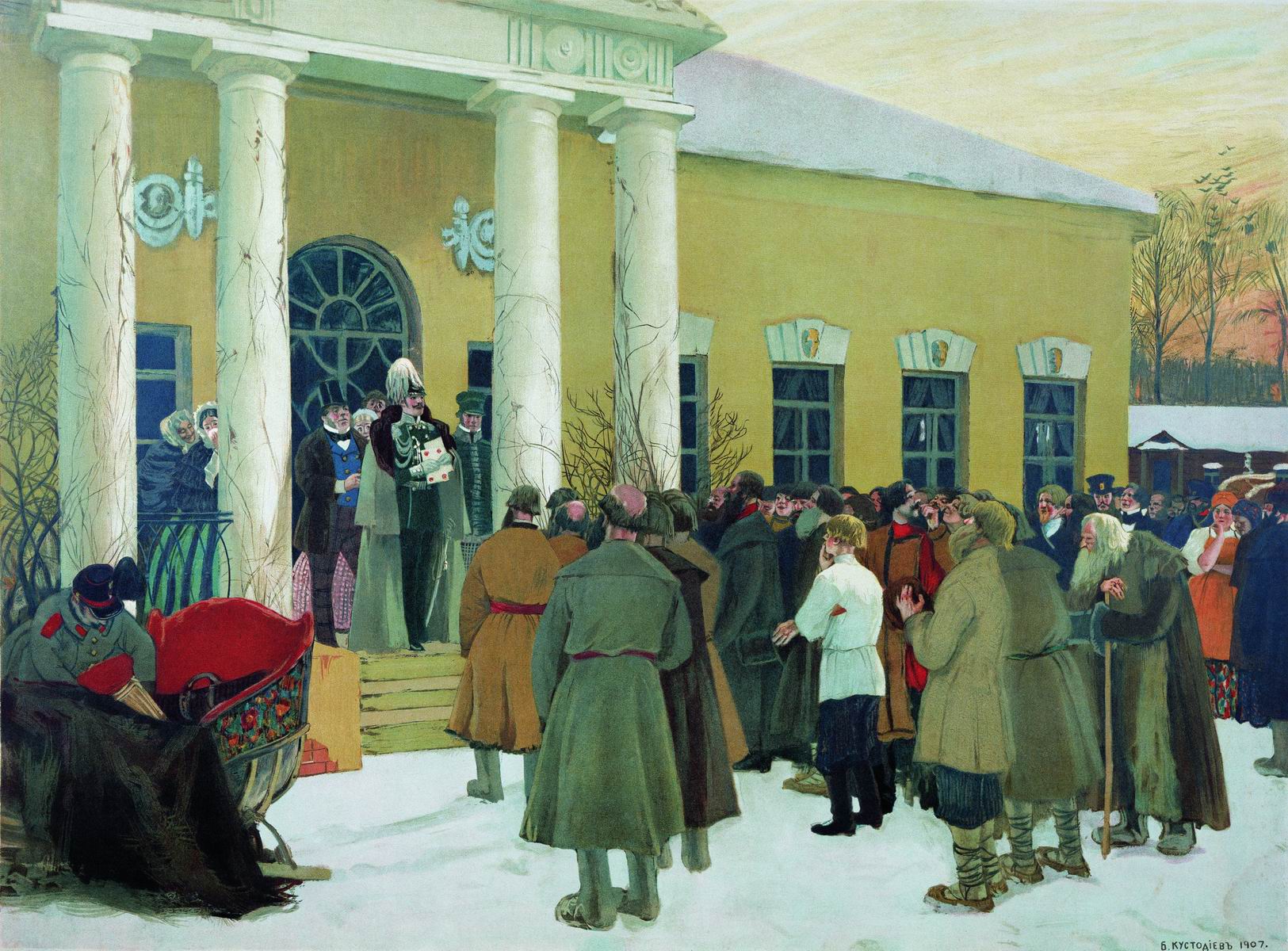
Domar’s Hypothesis predicts that, in a land-abundant economy, those who do not want to work the land will enslave others to do so. In contrast to this hypothesis, when deaths from the Bubonic Plague made land very much more abundant than workers in Europe, European peasants gained labour rights. Domar believes that political developments in Europe were sufficient to counter the forces explained by his hypothesis. Another factor protecting European peasants is that they were less geographically isolated than Russian peasants, thus better able to organize, publicize their plight, and assert their wishes.

Fenske (2009) describes the case of the Egba of south-western Nigeria and finds that it fits with Domar’s hypothesis. Indenture and slavery were present in this land-abundant economy. Fenske also makes a connection between land-abundance and lack of credit.
The Egba are Yoruba-speaking Nigerians who first settled their current territory in 1830. Their military success expanded their base so much that, by 1911, population density was still only 142 people per square mile.
Between 1830 and 1914 the Egba followed a system of extensive agriculture which involved clearing forest, farming the land for five or six years without fertilizer, and then moving on to new land. Land, especially land far from settlement and without many palm, kola, or cocoa trees, could be acquired for very little if any payment. Property rights over cleared land were loosely defined and rarely permanent. In 1914, the British were renting over 26,000 acres from the Egba at less than one shilling per acre.
Since every Egba man could have all the land he required, no Egba man was willing to work for another farmer and earn less than his total product. Since the technology was very simple, and there were no large fixed costs to farming, there were no economies of scale to make a farm with many workers more productive than a farm with one worker. Consequently, wage labor was rare. Wage labour became stigmatized.
The second consequence of land abundance was that land was not very valuable and did not serve well as collateral. It was difficult for the Egba to get loans. The record shows that people pawned themselves and their children in exchange for loans, and that people took draconian measures to achieve payback from their borrowers.
In a society without credit and without a social safety net, when all you have is yourself and your family, slavery is a way to escape starvation. It is a way to pay debt, including debt to a community because of crime. When someone saves your life, you may have no means to repay this person other than by paying this “life debt” with a life of service. In a way, a life of service is one inalienable thing each human being has to offer in trade. Perhaps this is one reason why slavery was tolerated for thousands of years.
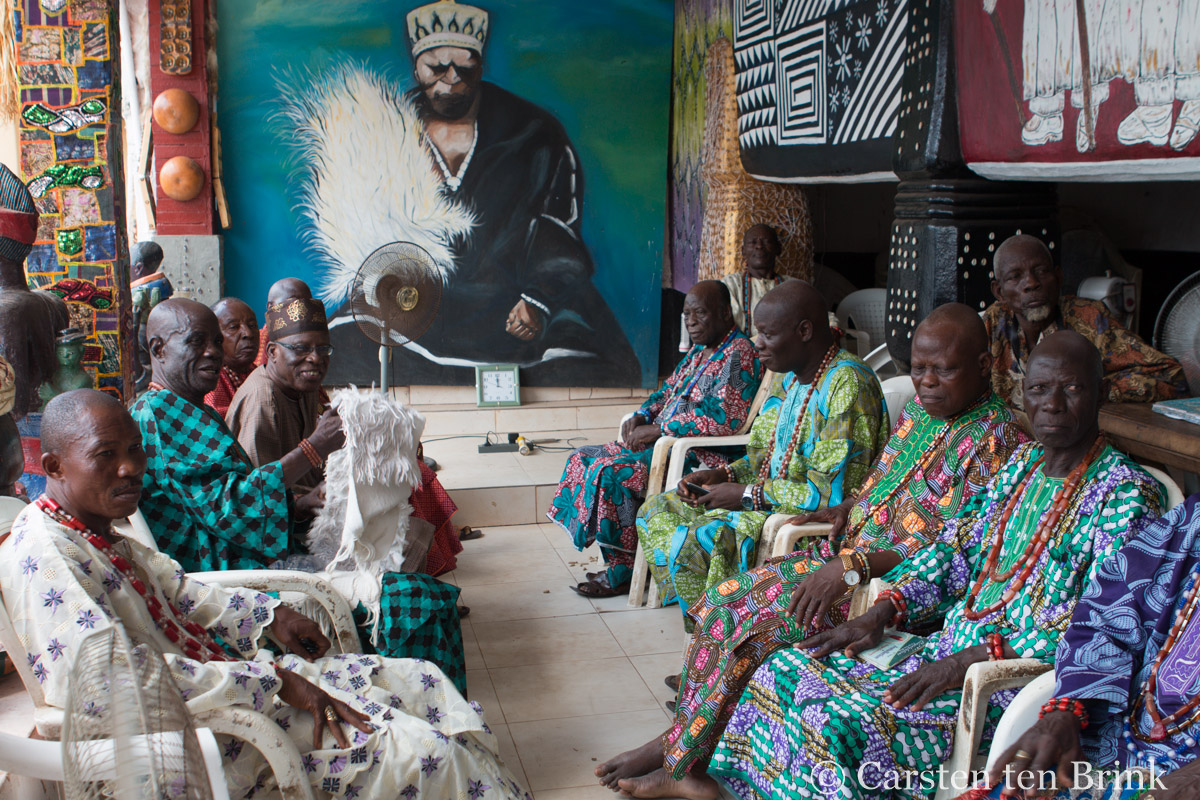
In their situation of land abundance, labour scarcity, and credit scarcity, the Egba accepted slavery and pawning. They also practiced polygyny and bride price. Polygyny is the practice of having multiple wives. When land is cheap, and when women work the land, there is little cost to having more wives. In fact, wives are a net material benefit as agricultural workers, and command a bride price, a payment from the groom’s family to the bride’s family upon marriage.
Slaves may have made up as much as one fifth of the population. They were generally strangers who were captured in war, people who sold themselves or who were sold by their relatives to pay debt, or criminals being punished. Slaves provided scarce labor, reduced the uncertainty around labour availability at harvest time, and also served as productive “assets” in an economy where there were few opportunities to save or invest.

Fenske writes, “Understanding the existence of forced labor is of particular relevance to Africa, given the large-scale export of human beings from an under-populated region – a trade which had the effect of keeping the continent’s population stagnant over the course of several centuries.” Usually, an economy exports goods which make intensive use of whatever resource the country has in abundance. In the case of Africa, heat-loving crops, gold, or ivory would be obvious choices. But the very fact that Africa was under-populated meant that humans were the most valuable thing around and vulnerable to disenfranchisement and commoditization by one another. Another, more important factor was the demand by Europeans for crops grown in plantation style, which required gang labour. We discuss this more in the next section.

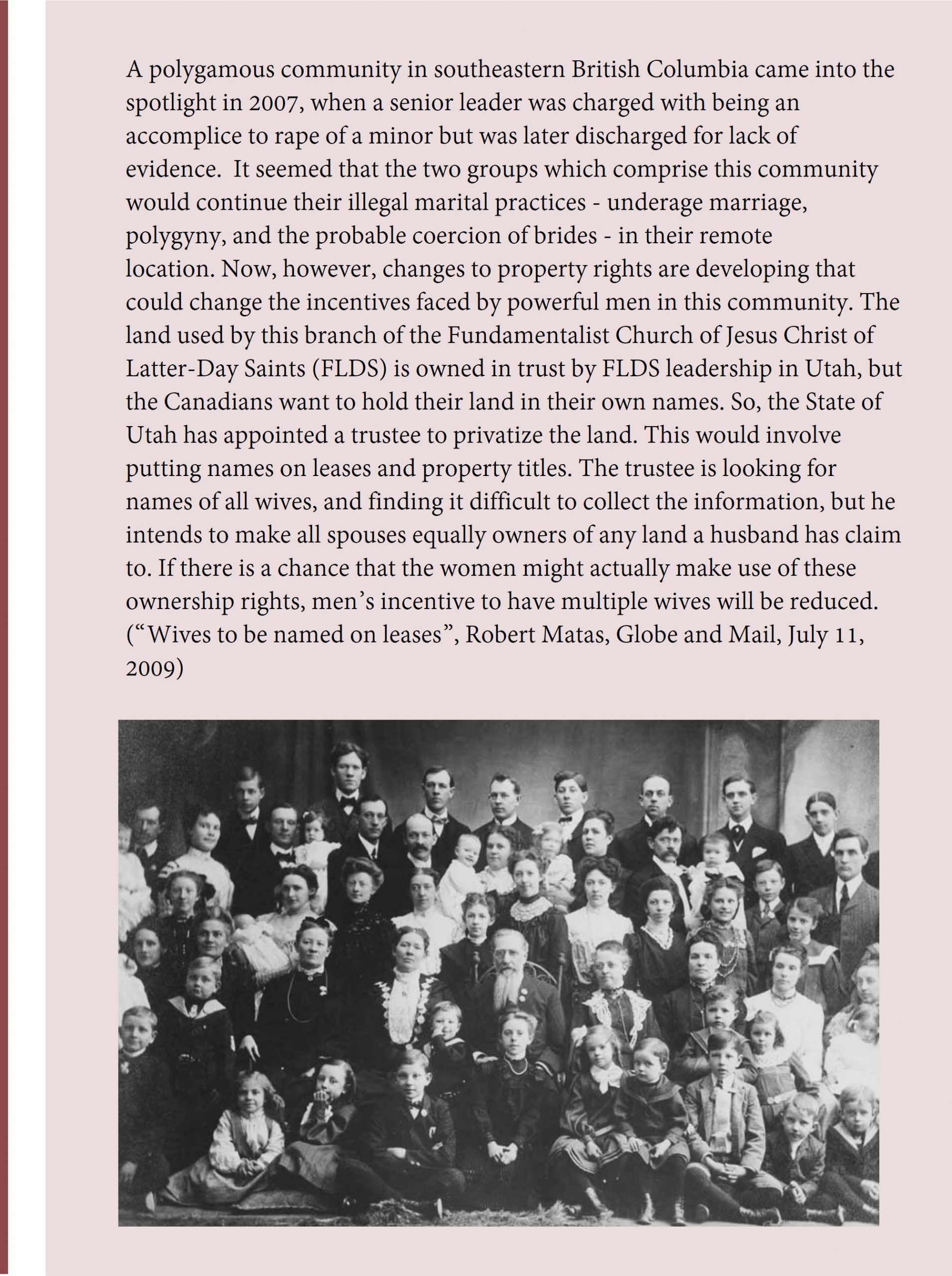

We have seen that slavery is likely to arise when labour is scarce relative to other factors. Slavery is also associated with a particular kind of work, namely, work that is intense and demeaning.
Work that is particularly intense and demeaning is work that no one wants to do. The wage offered may be higher than the average wage, but the non-pecuniary factors cause individuals to feel better off without that kind of employment. Plantation-style agricultural work, manufacturing under sweatshop conditions, mining in hazardous conditions, and prostitution come to mind as examples of work that many people will not do unless coerced.
When this kind of work is profitable, there is an incentive for humans to be trafficked to provide the labour. Slavery can increase the enslaved person’s material output, but too little of that output will accrue to the enslaved person.
Fogel and Engleman, in their book “Time on the Cross” (1974), make a detailed study of the economics of the transatlantic slave trade between 1500-1870. During this time, about 9.5 million Africans were enslaved and brought to the Americas, 60% to Latin America, 40% to the Caribbean, and 6% to the United States. Most of the slaves were employed on sugar plantations, except in the United States, where sugarcane was not grown.
By 1825 the United States had become the major holder of slaves in the Americas, owning 36% of slaves in the West. This was not because it had imported most of the slaves, but because of a high rate of natural increase in the American slave population (25% per decade). This higher rate of natural increase, higher compared to the negative rate among slaves in Central and South America, was likely due to a more balanced sex ratio, lower incidence of endemic diseases like yellow fever, and absence of sugarcane plantations. Work on sugarcane plantations was brutal.
Indentured Europeans were brought to the West Indies to work on sugarcane plantations shortly after Columbus arrived. However, indentured Europeans defected in response to the difficult work, hot weather, and tropical disease, and new recruits could not be persuaded to come in great numbers.
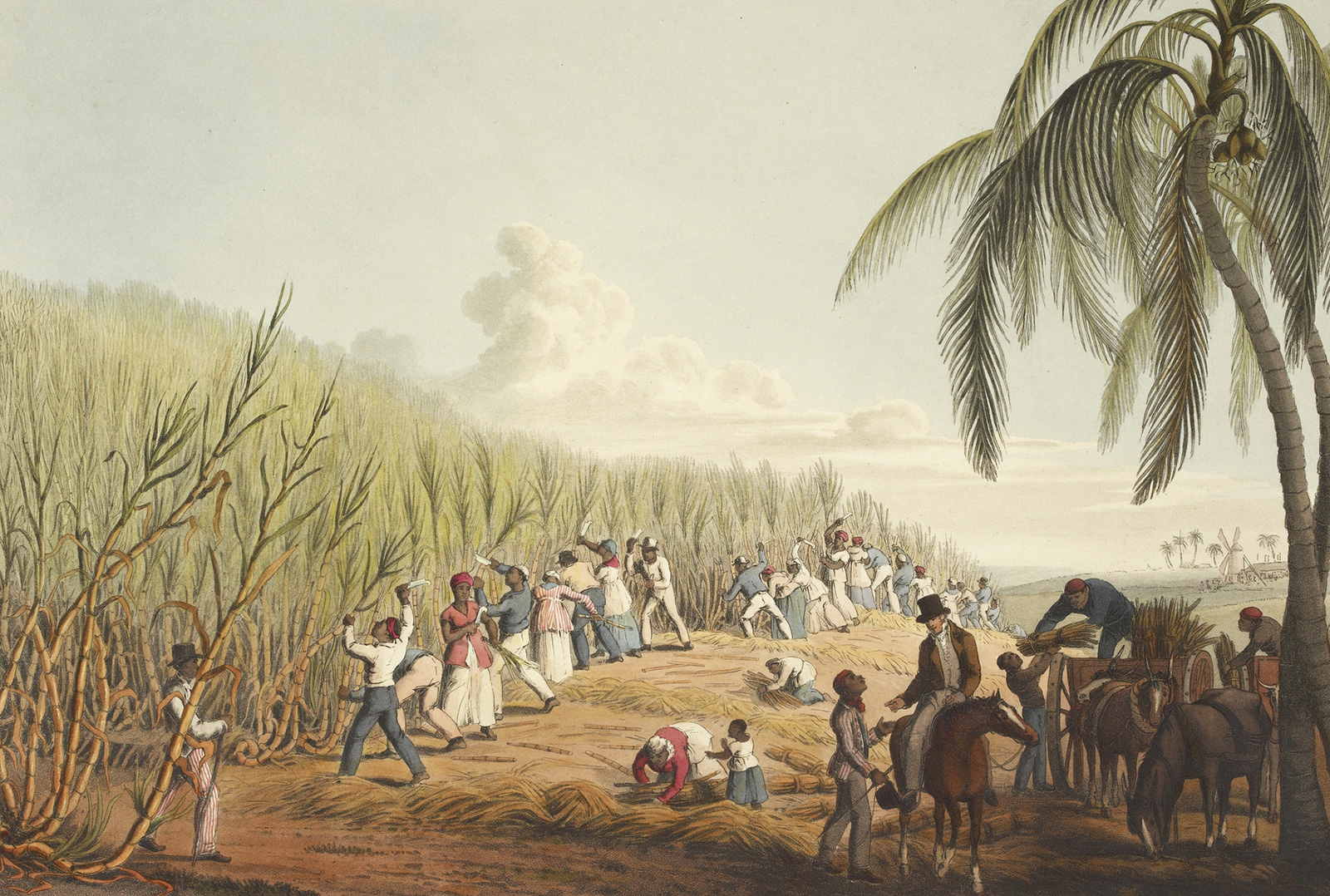
Fogel and Engerman conclude that slavery in the Americas was associated not with agriculture in general, but with plantation agriculture -large scale and labour-intensive- in particular. They claim that plantation-style agriculture was about 50% more productive than other methods of growing sugar and cotton. However, nowhere could free men be induced to work on plantations, not even for 50% higher wages. “For it was only by force that it was possible to get blacks to accept gang labor without having to pay a premium that was in excess of the gains from economies of scale… After the slaves were freed, many planters attempted to reconstruct their work gangs on the basis of wage payments. But such attempts generally foundered, despite the fact that the wages offered to freedmen exceeded the incomes they had received as slaves by more than 100 percent.”
Fogel and Engerman argue that, while force was necessary to get gang-style labour, the use of force had its costs, and there were diminishing returns to using force. They provide some evidence suggesting that the nutrition and health of American slaves was at least as good as that of the average white person in the American south. Slaves may have “shared” in the gains from the economies of scale; some with specialized skills, such as musicians and blacksmiths, earned money. What the slaves were paid was, of course, not enough to compensate them for their loss of freedom, the unpleasantness of their labour, and the risks to their health and life. Fogel and Engerman write: “For every dollar gained by a typical consumer of cotton cloth [in lower cotton prices], there was a slave laboring somewhere under the hot southern sun who would lose at least $400 [in non-pecuniary costs].”
When slaves are freed, they are able to choose work more amenable to them… if they are not prevented by racism. Immediately after emancipation, many former slaves were worse off economically. After emancipation, African American nutrition, health, and life expectancy declined (Fogel and Engerman (1974) p. 261). Whereas some slaveowners had put Black people in jobs where they were most productive, after emancipation Whites pushed Blacks out of skilled trades, and Black wages declined relative to White wages.

Adding the insight of Fogel and Engerman (1974) that slaves are used to do particular kinds of work, we can write Domar’s Hypothesis this way:
When there exists universal economic opportunity, people of ordinary skill who refuse to do ordinary work may seek extraordinary profit by forcing others to do extraordinarily unpleasant work.

As described by Joy Parr (1980), in the late nineteenth century about 30% of the British population lived in poverty. In city slums the infant mortality rate was 250 per 1000, and life expectancy at birth was about 36. Orphaned or impoverished children were sometimes brought to the local authorities, then placed in apprenticeships, rural factories (restricted after 1830), industrial schools, or workhouses.[1] The workhouses became increasingly crowded after the Irish Potato Famine (late 1840s) and the recession of the late 1860s.
In response to lobbying efforts, the government agreed to allow children to be sent to Canada. Most were sent by municipalities, about 20% by evangelical church groups who had spearheaded the lobbying, and the rest by other religious denominations or charities. Sometimes children were sent abroad against the wishes of their parents. The first two distributional homes were at Niagara-on-the-Lake and Belleville, Ontario. Other major centres were Toronto, Peterborough, Brockville, Ottawa, Montreal, Sherbrooke, and Halifax. There is a reference to a “Barnardo boy”, Barnardo being one of the founders of this child emigration movement, in the classic novel Anne of Green Gables. A total of 80,000 British children were compelled to come to Canada between 1868-1925.
![Group of boys working in a field at the Philanthropic Society Farm School (1898-1910). Credits to: Library and Archives Canada [MIKAN 4456336, 4447441] (Access 90 Open)](https://ecampusontario.pressbooks.pub/app/uploads/sites/1262/2021/06/8212200486_f1016975f2_o.jpg)
What motivated the forced migration of these children? Besides a desire to help them, there must have been a belief that land-rich Canada, with a scarcity of labour, would welcome these children for the labour that they could provide. Indeed, for children over eight years old, that seemed all that Canada was willing to do. Joy Parr argues that, for these children, a formal work obligation helped protect them.
Very young children were placed in trial adoptions, but the placement agencies found that children over the age of eight were usually not accepted as part of the family. Because of this, indenture seemed preferable to an attempted adoptive relationship, because indenture defined the rights of the child and spared them fantasies of achieving birth child status in the family. Parr writes, “Formal apprenticeship indentures did more to define the rights of British immigrant children than to extinguish their liberties.”
What transpired is that children six to ten years of age were housed with families in exchange for a fee paid by the agencies. Between age eleven and age fourteen children usually boarded for free in return for their chores, and between the ages of fifteen and eighteen they were indentured to work for pay that the agency collected. After they turned eighteen they were free to earn their own wages and manage their own lives.
Younger children were more popular in isolated areas where there was little off-farm opportunity for the farmwife, and where it was more difficult to market farm produce for cash. “Home children” would help earn cash and could be fed on farm produce. As children grew in skill and stature, they were relocated to more prosperous areas which could offer more pay. In one sample, boys were moved an average of 3 times, girls even more frequently. This must have been disruptive to their development.

We have seen that slavery and forced migration are more likely when labor and credit are scarce. Coercion is likely in industries where workers’ conditions are intense and dangerous. Slaves welcome liberty, but in some cases their material standard of living deteriorates once they are freed.
In the world today, women, men, and children are being trafficked. Statista.com reports 115,324 identified cases of trafficking in 2022, but there are likely many more. Victims are used for sex or made to work long, hard shifts as nannies, agricultural workers, construction workers, food service workers, and more. Some victims are conned by people offering to sneak them into a better country.
According to the Trafficking in Persons Report issued by the United States State Department each year, there are countries which do not fully meet the recommendations of the United States Trafficking Victims Protection Act (2000) and are not making significant progress towards doing so. In 2023 they were, by region:
Burma*, Cambodia, China*, Macau, North Korea*
Afghanistan*, Iran*, Syria*, Yemen
Algeria, Chad, Djibouti, Equatorial Guinea, Eritrea*, Guinea-Bissau, Libya, Somalia, South Sudan*
Belarus, Russia*, Turkmenistan*
Cuba*, Curacao, Nicaragua, Sint Maarten, Venezuela
Papua New Guinea
In these countries, sometimes because of war and government dysfunction, modern standards of prevention and care are not being met. The starred (*) countries are said to display an entrenched pattern of human trafficking. This may include recruitment of child soldiers, use of slaves in government-funded projects, and slave labour at government detention centres.
Not only these, but all countries have progress to make in uprooting human trafficking.
According to a publication of the Canadian Centre for Justice and Community Safety Statistics (Conroy and Sutton (2022)), almost three thousand cases of human trafficking were reported by Canadian police between 2010 and 2020. In these incidents, 25% of victims were under the age of eighteen and 96% of all victims were female. Seventy-seven percent of accused perpetrators were under the age of 35. Ninety-one percent of victims knew their trafficker – most often a former or current intimate partner (31% of victims).
The same report noted that, of 342 incidents in 2020, about half had to do with immigrants, refugees, or temporary foreign workers. Throughout the previous decade, 2010-2020, most reported victims were Canadian; the number of those with Indigenous identity was not given, but can be assumed to be disproportionately large.
A dear friend of the author (Hageman) came all by herself from Hong Kong to Vancouver in the 1980s to attend high school.[2] Her contact was a former piano teacher, with whom she stayed. The piano teacher soon had my friend doing household chores. She then began to bring men around the house and make suggestions. Before anything worse happened, my friend, penniless and in tears, boarded a bus and blurted out one of the few English words she knew: “YMCA”. I’m happy to say that things took a turn for the better at that point.
This story illustrates the sad reality that often, when a group is exploited, one of its own members is collaborating.
To combat human trafficking we need to uncover and prosecute it. It is also important to understand the push and pull factors.


To fight human trafficking we need to educate potential victims and potential host communities. We must ensure that people have a fair chance to develop their potential, and to safely move to areas where they have more economic opportunity. We must also spend resources finding human traffickers. Traffickers must then be given a significant penalty.
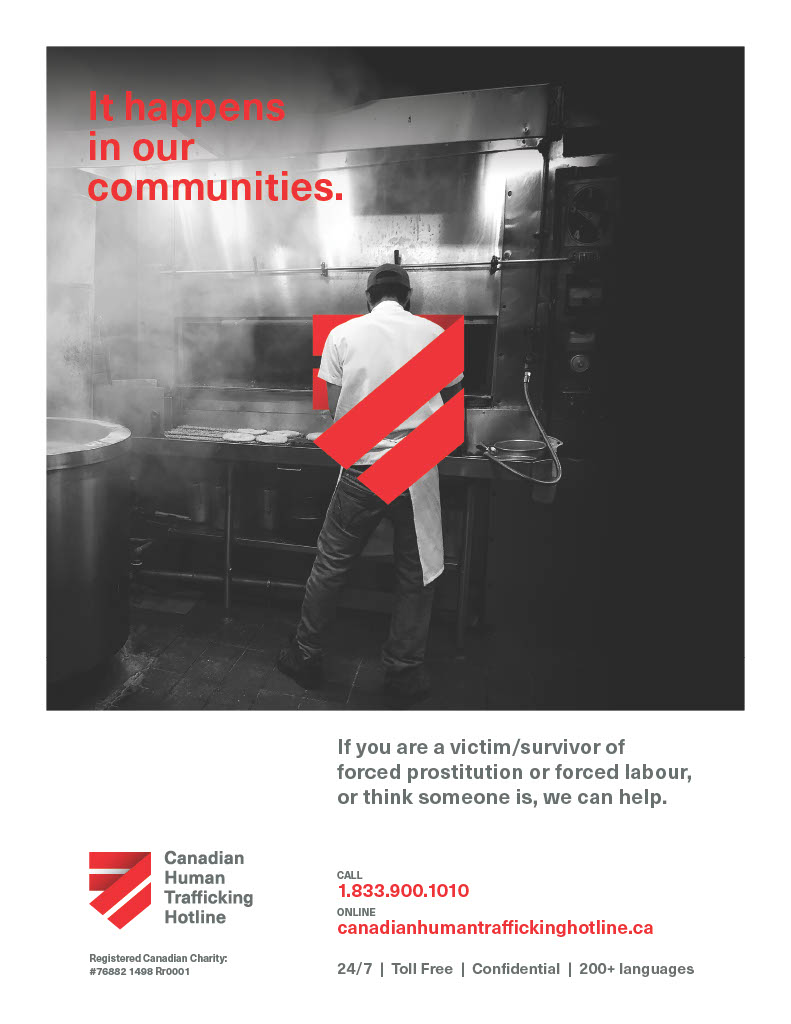
Some practical tips to combat forced labour from the 2023 Trafficking in Persons report include:[3]
- Targeted public awareness campaigns
- Frequent, unannounced audits of employers as to worker recruitment, working conditions, and living conditions
- Interviewing workers in a safe space away from management
- Giving workers access to anonymous complaints channels
- Educating workers on their rights
and to combat sexual exploitation:[4]
- Targeted public awareness campaigns
- Training for first responders, medical staff, and criminal justice workers to understand the needs of female and also male victims
- Safe housing for victims, particularly male victims
- Medical care including trauma-informed and culturally appropriate mental health and psycho-social support
- Help with education, skills training, and employment

Criminalization of an activity raises the costs of that activity. Costs include the fines and jail time that are incurred with various probabilities, and the cost of avoiding detection. The two main results of these higher costs are that:
1) the activity is discouraged; and
2) the activity is driven underground.
There is no question that criminalizing an activity will reduce its incidence. When costs rise, the supply curve rises or “shifts left to the origin”. Higher prices are charged to cover the higher costs, and this discourages use. If suppliers fight among themselves for control of the market, and one succeeds in monopolizing the market, prices will rise even more, and output will fall even more. Monopolists always restrict output to keep prices above the free market price.
So far so good. But we have not addressed the consequences of the activity being driven underground. This gives rise to all kinds of negative external costs. As previously mentioned, the suppliers are able to conduct turf wars underground, and violent crime is likely to escalate, at least among the criminal class. The criminals who succeed may use their monopoly profits to branch into other criminal activities or to bribe politicians.
Another consequence of an activity being driven underground is that the activity can change. Sellers may contaminate the product, which is now unregulated, endangering buyers. And workers will suffer if they are forced into more isolated and less safe working environments.
Prostitution is an especially tough case. Legalizing brothels will lead to more prostitution. And brothels are places where confinement and violence can occur unseen. On the other hand, criminalizing brothels forces prostitutes into the cars and hotel rooms of strangers.
Criminalizing human trafficking drives it underground where it is difficult to find. But we have no choice other than to criminalize it; we cannot legalize this exploitation without tearing the heart out of our society. That’s why prevention is critical.
We have now treated the three drivers of population change: mortality, fertility, and migration. In our next chapters, we zoom in on Family Structure and Son Preference.

- Fill in the blanks based on what you learned in this chapter:
| Temporary Foreign Workers in Canada today | Indenture | Serfdom | Slavery | |
| Migrate freely? | ||||
| Family life, choice of employer? | ||||
| Unpleasant work? | ||||
| Permanent condition? |
2. Usually, nations or colonial masters of a nation export a commodity which they have in abundance. Why were humans exported from Africa in recent centuries when the population density of Africa was low?
3. Why is polygyny less likely in an urban environment?
4. Consider a village that routinely looks the other way when “employers” from the city come to bargain with poor parents for preteen girls. Your parents still live in that village, and you return from time to time with gifts. What can you do to change the situation for the better for preteen girls?
- Workhouses were not usually places of hard work, but were places where the poor could be housed. They were usually crowded and provided minimal food. There were attempts to find employment for residents of workhouses, and sometimes the working-age residents were forced to do work at the workhouse itself. ↵
- A report based on 2003 data found that East Asian homestay students in British Columbia were at greater risk for abuse and self-harm than immigrants and Canadian-born students of East Asian heritage. See S. T. Wong et al. (2010) ↵
- United States Department of State (2023) ↵
- Ibid. ↵
See Chapter 22 for a traditional and a modern statement of Domar's Hypothesis.
Indenture is the state of being contracted to another person or a firm to work without pay for a specified period of time.
Polygyny occurs when it is normal for men to be married to multiple women at the same time.
Bride price is a payment from the man's family to the woman's family upon the occasion of their marriage

